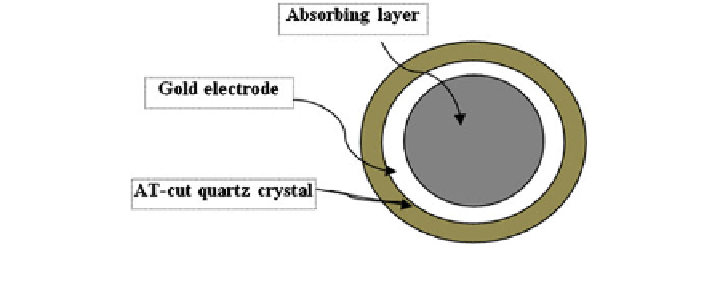Biomedical Engineering Reference
In-Depth Information
Fig. 6.10
Gravimetric odor sensor
Table 6.3 Types of E-nose sensor and material usage and detection principle of sensors [
18
]
Sensor type
Sensitive material
Detection principle
Acoustic sensors: Quartz crystal
microbalance (QMB); surface and bulk
acoustic wave (SAW, BAW)
Organic or inorganic
film layers
Mass change
(frequency shift)
Calorimetric; catalytic bead (CB)
Pellistor
Temperature or heat
change (chemical
reaction)
Catalytic field-effect sensors (MOSFET)
Catalytic metals
Electric field change
Colorimetric sensors
Organic dyes
Color changes,
absorbance
Electrochemical sensors
Solid or liquid
electrolytes
Current or voltage
change
Fluorescence sensors
Fluorescence sensitive
Detector
Fluorescent-light
emissions
Infrared sensors
IR-sensitive detector
Infrared-Radiation
Absorption
Metal oxides semi-conducting (MOS)
Doped Semi-conducting
metal oxides (SnO
2
,
GaO)
Resistance change
Optical sensors
Photodiode, light
sensitive
Light modulation,
optical changes
MPEN
Micro plasma
Light emission, spectra
analysis
Two types of acoustic wave E-nose sensors are mostly used and discussed here:
(a) Quartz crystal microbalance (QCM) sensor also known as bulk acoustic wave
(BAW),
(b) Surface acoustic wave (SAW).


Search WWH ::

Custom Search